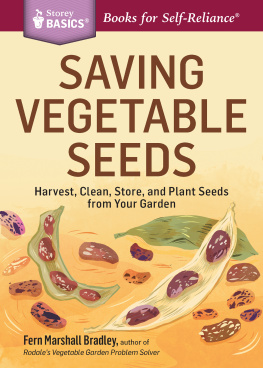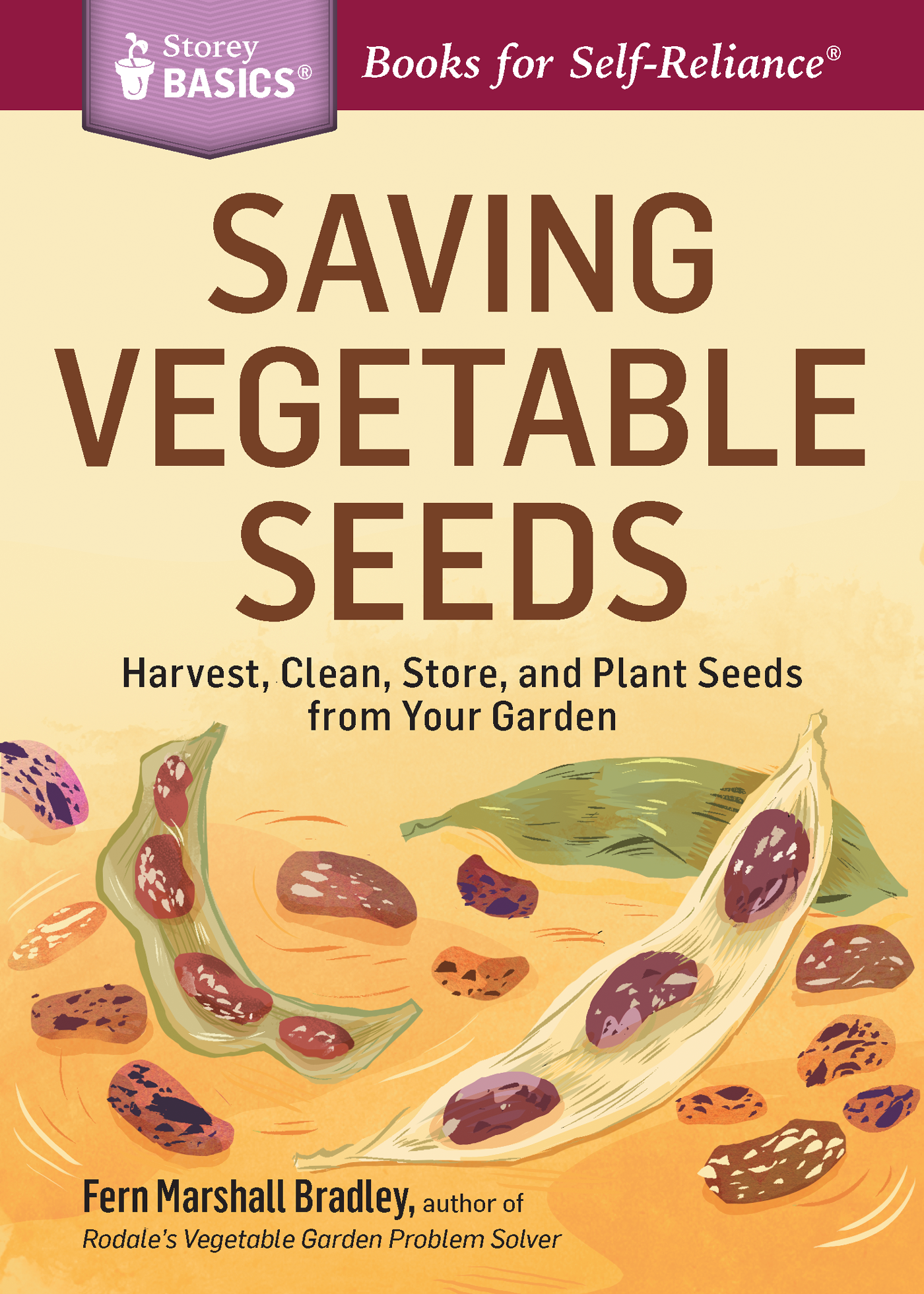Other Storey Books You Will Enjoy
The Vegetable Gardeners Bible, 2nd edition
Edward C. Smith
The 10th anniversary edition of the vegetable gardening classic, with expanded coverage and additional vegetables, fruits, and herbs.
READ MORE AT STOREY.COM
The Vegetable Gardeners Container Bible
Edward C. Smith
Detailed, illustrated advice on how to choose the right plants for a small-space container garden and care for them throughout the season.
READ MORE AT STOREY.COM
Week-by-Week Vegetable Gardeners Handbook
Ron Kujawski & Jennifer Kujawski
Detailed, customizable to-do lists to break down gardening into simple, manageable tasks.
READ MORE AT STOREY.COM
The Wildlife-Friendly Vegetable Gardener
Tammi Hartung
Teaches a mindful approach to vegetable gardening and helps you create positive relationships with local wildlife.
READ MORE AT STOREY.COM
The Year-Round Vegetable Gardener
Niki Jabbour
How to grow your own food 365 days a year, no matter where you live!
READ MORE AT STOREY.COM
Join the conversation. Share your experience with this book, learn more about Storey Publishings authors, and read original essays and book excerpts at www.storey.com .
Look for our books wherever quality books are sold or by calling 800-441-5700.
Contents
Acknowledgments
Many thanks to the following people for reading and commenting on the manuscript: my friends and fellow gardeners Tracy Frisch, Caz Lewis, and Bliss McIntosh, as well as Petra Page-Mann and Matthew Goldfarb of Fruition Seeds. Their insights and experience helped make this a better book.
Introduction
Saving seeds is a home gardening tradition thats coming back into its own. Only a few generations ago, people learned to save seeds as part of the ordinary seasonal routine, working alongside their parents, grandparents, or neighbors. Locally grown seed, including a diverse patchwork of family heirloom varieties, was the norm.
Times have changed, and unless you live near one of the world centers of seed production, most of the seed you buy at garden centers or from large mail-order seed companies was grown far away, in climate conditions very different from those where you live. Also, youve probably had the experience of learning to like and rely on favorite varieties of crops but then discovered that they had disappeared from seed company catalogs.
The development of the modern seed industry has served the interest of large-scale agriculture and has proven to be a profitable business, especially for the small group of large corporations that now control most of the worlds seed. But as the amount of commercially available seed has grown, the numbers of different types of seeds have diminished. Large commercial seed companies focus their seed production on only the most profitable varieties. This includes breeding new F1 hybrid varieties that offer the characteristics large-scale farming operations need most, such as uniformity of ripening and fruit that withstands rough handling.
Many home gardeners and small-scale farmers are questioning whether this model of centralized seed production is best for them. They worry about losing genetic diversity, and they seek seed varieties that offer excellent flavor and texture and are produced in their region. They want seed that has been produced using organic and sustainable methods, because thats how they grow their crops.
The exciting news is that theres a resurgence of small seed companies focusing on varieties that are well adapted to their regions, and some are using sustainable growing methods and even offering certified organic seed. Along with that, theres a rekindled excitement about home seed saving. Gardeners from coast to coast are discovering that saving seed can be a new way to have fun in the garden. Once you learn the basics, its easy to save seeds from such crops as beans, tomatoes, and lettuce. Saving seeds of other crops, such as carrots and squash, poses more of a challenge but can be mastered with time. Join the new seed-saving generation! Youll quickly discover the joy of saving seeds and sharing your homegrown seeds and knowledge with fellow gardeners through seed-swapping groups, seed exchanges, and community gardens.
Chapter 1
Getting Started with Saving Seeds
Collecting and saving seeds adds a new dimension to gardening. Its an adventurous experiment to shepherd a crop through the seed-production phase especially a crop you dont usually grow for seed, such as lettuce or radishes. The basics are easy to learn, and some seed-saving tasks, such as collecting and cleaning seeds, are pleasant, lightweight pastimes. After all, harvesting seeds is a lot easier on the back than digging potatoes or hauling a tub of squash!
Start with saving seeds from a few of the easier crops, such as beans or tomatoes. Then, if you really enjoy saving seeds, you can save seeds from more challenging crops. You can even begin developing your own strains of plants that are uniquely suited to your growing conditions.
One side benefit of learning how to save seeds is that you will become a better gardener overall. Being a seed saver trains you to pay more attention to your local growing conditions and whats happening in your garden. Youll begin to seek answers to all sorts of questions: How long is your growing season? When are you most likely to have rainy spells? How cold does it get during the winter? Are there places in your garden where crops arent doing as well as others? Whats going on with the soil there? What kinds of weeds are growing in and around your garden? How can you prevent weeds from going to flower? All these factors influence your success in saving seeds.
Learning more about plant biology, such as how pollination takes place and how seeds form and mature, is part of the picture, too. Youll develop the habit of studying your plants more closely, because youll want to save seeds only from plants that are doing the best and that have the characteristics you find most desirable. Which plants in a row of beans are flowering first? Which spinach plants are the last to bolt? Does one of your tomato plants have fruits with particularly good flavor and color? Is one of your squash vines remaining lush while its neighbors are succumbing to powdery mildew?
Youll also find yourself investigating your house, garage, and other outbuildings for their potential to store seeds and plants. Which areas are cold and dry, and which are damp? What spots stay consistently cold during the winter but dont freeze up?
What Is a Seed?
As a gardener, youve probably handled hundreds, even thousands, of seeds. But to become a successful seed saver, it helps to learn whats inside those seeds and how plants form them in the first place. Although theyre very small, seeds are complex structures with an amazing capacity for growth and transformation. Essentially, a seed has three parts:
- Embryo. The nascent plant, the embryo is the structure that will form roots and shoots as the seed germinates.
- Endosperm. This built-in food supply nourishes the embryo as it starts to grow.
- Seed coat. The hard outer shell of the seed protects the embryo. Although the seed coat is a tough shell, water and air can pass through it.














